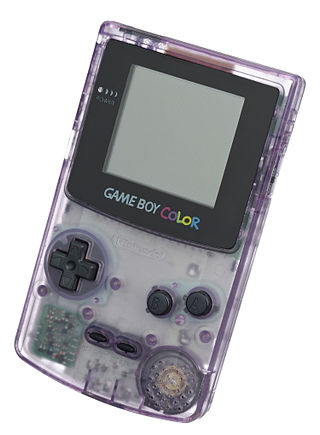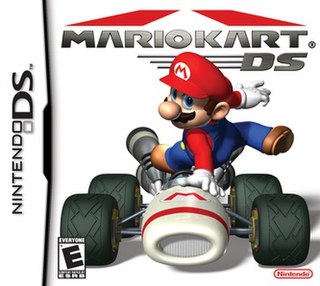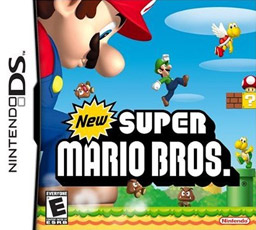This article needs additional citations for verification .(January 2024) |
There have been several racing games in the Mario franchise.
This article needs additional citations for verification .(January 2024) |
There have been several racing games in the Mario franchise.
| Title | Details |
|---|---|
Original release date(s): | Release years by system: 1992 – Super Nintendo Entertainment System 2009 – Virtual Console (Wii) 2013 – Virtual Console (Wii U) 2016 – Virtual Console (New 3DS and 2DS XL) 2019 – Nintendo Switch Online (Nintendo Switch) |
| Notes: Starts the series. | |
Original release date(s): | Release years by system: 1996 – Nintendo 64 2007 – Virtual Console 2021 – Nintendo Switch Online (Nintendo Switch) |
| Notes: Introduced Wario and Donkey Kong, replacing Koopa Troopa and Donkey Kong Jr. | |
Original release date(s): | Release years by system: 2001 – Game Boy Advance 2011 – Virtual Console (3DS, Ambassadors and Custom Firmware hacked systems only) 2014 – Virtual Console (Wii U) |
| Notes: Included all of Super Mario Kart's courses. | |
Original release date(s): | Release years by system: 2003 – GameCube |
| Notes: Introduced many new characters to the series, as well as featuring double items and co-op play in a single Kart. This also marked the first appearance of Toadette. | |
Original release date(s): 2005 | Release years by system: 2005 – Arcades |
| Notes: Included PAC-MAN characters | |
Original release date(s): | Release years by system: 2005 – Nintendo DS 2015 – Virtual Console (Wii U) |
| Notes: Introduced R.O.B, which is not part of the Mario franchise, as well as Dry Bones. | |
Original release date(s): 2007 | Release years by system: 2007 – Arcades |
| Notes: Introduced Waluigi and Mametchi to the arcade games. | |
Original release date(s): | Release years by system: 2008 - Wii |
| Notes: Introduced 12-player racing, as well as Baby Peach, Baby Daisy (her only other appearance in the Mario franchise is Mario Super Sluggers and Mario Kart 8 / Mario Kart 8 Deluxe), Rosalina, Funky Kong and Dry Bowser to the series. Doesn't just use karts, but uses bikes, too. | |
Original release date(s): | Release years by system: 2011 - Nintendo 3DS |
| Notes: Introduced gliders, driving underwater, kart customizations and divers, as well as Metal Mario, Shy Guy, the Queen Bee (known as Honey Queen in this game), Wiggler and Lakitu to the series. | |
Original release date(s):
| Release years by system: 2013 - Arcades |
Original release date(s): | Release years by system: 2014 - Wii U |
| Notes: Introduced anti-gravity racing to the series and a new battle mode format in which regular racing tracks were repurposed as battle mode tracks. DLC included the 200cc engine class in Grand Prix and VS Race, five new characters (Tanooki Mario, Cat Peach, Link, Villager and Isabelle, and new original tracks. | |
Original release date(s):
| Release years by system: 2017 - Nintendo Switch |
| Notes: Introduced 200cc Time Trials and a new battle mode with two new battle mode formats and eight battle arenas (5 new, 3 returning from previous games). Several features from Double Dash were reintroduced in this game, such as double items and the battle modes Shine Thief and Bob-omb Blast. Coin runners was also reintroduced as a battle mode from Mario Kart Wii. This port of Mario Kart 8 includes all base and DLC content of the original while also fixing various bugs and exploits present in the Wii U original. Resolution was also increased to 1080p in docked mode with handheld mode at 720p, compared to 720p on Wii U. New characters include Inkling Boy and Inkling Girl, with Gold Mario (a variant of Metal Mario), Bowser Jr, King Boo, and Dry Bones returning from previous games in the series. |
| Title | Details |
|---|---|
Original release date(s):
| Release years by system: 1984 – Famicom 1990 – Game Boy |
| Notes: Only in Japanese | |
Famicom Grand Prix: F1 Race Original release date(s):
| Release years by system: 1987 – Family Computer Disk System |
| Notes: Only in Japanese | |
Famicom Grand Prix II: 3D Hot Rally Original release date(s):
| Release years by system: 1988 – Family Computer Disk System |
| Notes: Only in Japanese |
| Title | Details |
|---|---|
Original release date(s): 1992 | Release years by system: 1992 – Nelsonic Game Watch [1] |
Original release date(s): 1997 | Release years by system: 1997 – Satellaview |

The Game Boy Advance (GBA) is a 32-bit handheld game console developed, manufactured and marketed by Nintendo as the successor to the Game Boy Color. It was released in Japan on March 21, 2001, in North America on June 11, 2001, in the PAL region on June 22, 2001, and in mainland China as iQue Game Boy Advance on June 8, 2004.

The Game Boy Color is an 8-bit handheld game console, manufactured by Nintendo, which was released in Japan on October 21, 1998 and to international markets that November. It is the successor to the Game Boy and is part of its product line. Critics like IGN consider it more akin to a hardware revision than a next generation product.

A handheld game console, or simply handheld console, is a small, portable self-contained video game console with a built-in screen, game controls and speakers. Handheld game consoles are smaller than home video game consoles and contain the console, screen, speakers, and controls in one unit, allowing people to carry them and play them at any time or place.

Super Mario World 2: Yoshi's Island is a 1995 platform game developed and published by Nintendo for the Super Nintendo Entertainment System (SNES). It is the sequel follow-up to Super Mario World. The player controls Yoshi, a friendly dinosaur, on a quest to reunite baby Mario with his brother Luigi, who has been kidnapped by Kamek. As a Super Mario series platformer, Yoshi runs and jumps to reach the end of the level while solving puzzles and collecting items with Mario's help. The game has a hand-drawn aesthetic and was the first in the franchise to have Yoshi as its main character, where it introduces his signature flutter jump and egg spawning abilities.

Super Mario Land is a 1989 platform video game, and it was developed and published by Nintendo as a launch game for its Game Boy handheld game console. It is the first Mario platform game to have been released for a handheld console. In gameplay similar to that of the 1985 Super Mario Bros., but resized for the smaller device's screen, the player advances Mario to the end of 12 levels by moving to the right and jumping across platforms to avoid enemies and pitfalls. Unlike the other Mario games, Super Mario Land is set in Sarasaland, a new environment depicted in line art, and Mario pursues the debuting Princess Daisy. The game has two Gradius-style shooter levels.

Gunpei Yokoi, sometimes transliterated as Gumpei Yokoi, was a Japanese video game designer. As a long-time Nintendo employee, he was best known as creator of the Game & Watch handheld system, inventor of the cross-shaped Control Pad, the original designer of the Game Boy, and producer of a few long-running and critically acclaimed video game franchises such as Metroid and Kid Icarus.

Sonic Jam is a video game compilation developed by Sonic Team and published by Sega for the Sega Saturn. It was released in Japan in June 1997 and in North America and Europe the following August. It contains the four main Sonic the Hedgehog games released on the Sega Genesis: Sonic the Hedgehog (1991), Sonic the Hedgehog 2 (1992), Sonic the Hedgehog 3 (1994) and Sonic & Knuckles (1994). It also features a 3D environment, "Sonic World", which doubles as an interactive museum of Sonic the Hedgehog content.

Mario Kart DS is a 2005 kart racing video game developed and published by Nintendo for the Nintendo DS handheld game console. It was released in November 2005 in North America, Europe, and Australia, and on December 8, 2005, in Japan. The game was re-released for the Wii U's Virtual Console in North America and PAL regions in April 2015 and in Japan in May 2016.

Mario's Cement Factory is a 1983 LCD game developed and published by Nintendo under their Game & Watch series. It follows earlier Mario games, like the arcade and Game & Watch versions of Donkey Kong. Players control Mario as he navigates elevators and funnels cement through a factory, while trying to prevent the cement from crushing his fellow workers. Two versions of the game were released — a Table Top unit and a handheld game akin to most other Game & Watch titles. Development was headed by Nintendo R&D1, led by engineer Gunpei Yokoi.

Donkey Kong is a 1994 platform video game developed by Nintendo and Pax Softnica and published by Nintendo for the Game Boy. Donkey Kong is loosely based on the 1981 arcade game of the same name and its sequel Donkey Kong Jr.

New Super Mario Bros. is a 2006 platform video game developed and published by Nintendo for the Nintendo DS. It was first released in May 2006 in North America and Japan, and in PAL regions in June 2006. It is the first installment in the New Super Mario Bros. subseries of the Super Mario franchise, and follows Mario as he fights his way through Bowser's henchmen to rescue Princess Peach. Mario has access to several old and new power-ups that help him complete his quest, including the Super Mushroom, the Fire Flower, and the Super Star, each giving him unique abilities. While traveling through eight worlds with more than 80 levels, Mario must defeat Bowser Jr. and Bowser before saving Princess Peach.

The Game Boy is an 8-bit fourth generation handheld game console developed and manufactured by Nintendo. It was first released in Japan on April 21, 1989, in North America later the same year, and in Europe in late 1990. It was designed by the same team that developed the Game & Watch series of handheld electronic games and several Nintendo Entertainment System (NES) games: Satoru Okada, Gunpei Yokoi, and Nintendo Research & Development 1.

The Barcode Battler is a handheld game console released by Epoch Co. in March 1991.

The history of Nintendo is from 1889 to the present, starting as a playing-card company to eventually becoming a multinational consumer electronics conglomerate. It has always remained headquartered in Kyoto, Japan.

The Japanese multinational consumer electronics company Nintendo has developed seven home video game consoles and multiple portable consoles for use with external media, as well as dedicated consoles and other hardware for their consoles. As of September 30, 2021, in addition to Nintendo Switch, Nintendo has sold over 863.07 million hardware units.
Entex Industries, Inc. was an American toy and electronic game manufacturer based in Compton, California. The company was active during the 1970s and 1980s.
Nelsonic Industries is an American electronics manufacturing and development company that operated from Long Island City, Queens, New York City in the early 1980s and throughout the 1990s when it was acquired by the watch-manufacturer, M.Z. Berger. Nelsonic produced numerous toy-themed wristwatches, often targeting younger audiences with likenesses of characters from popular franchises such as Barbie, the Ghostbusters, and Mario. Nelsonic became notable during the early mid-1980s for being the first electronics company in the United States to produce game-watches. For a period subsequent to its purchase by M.Z. Berger, Nelsonic operated as a subsidiary division of its parent company and game-watches were produced that bore the Nelsonic mark. This practice ended as M.Z. Berger shifted focus to more traditional and higher-end timepieces. Today the original Nelsonic Game Watch line has entered the secondary market and individual Game Watches have become highly sought-after collectibles that often fetch high prices on eBay and other online auction websites.

The Game & Watch brand is a series of handheld electronic games developed, manufactured, released, and marketed by Nintendo from 1980 to 1991. Created by game designer Gunpei Yokoi, the product derived its name from it featuring a single game as well as a clock on an LCD screen. The models from 1981 onwards featured an alarm in addition.